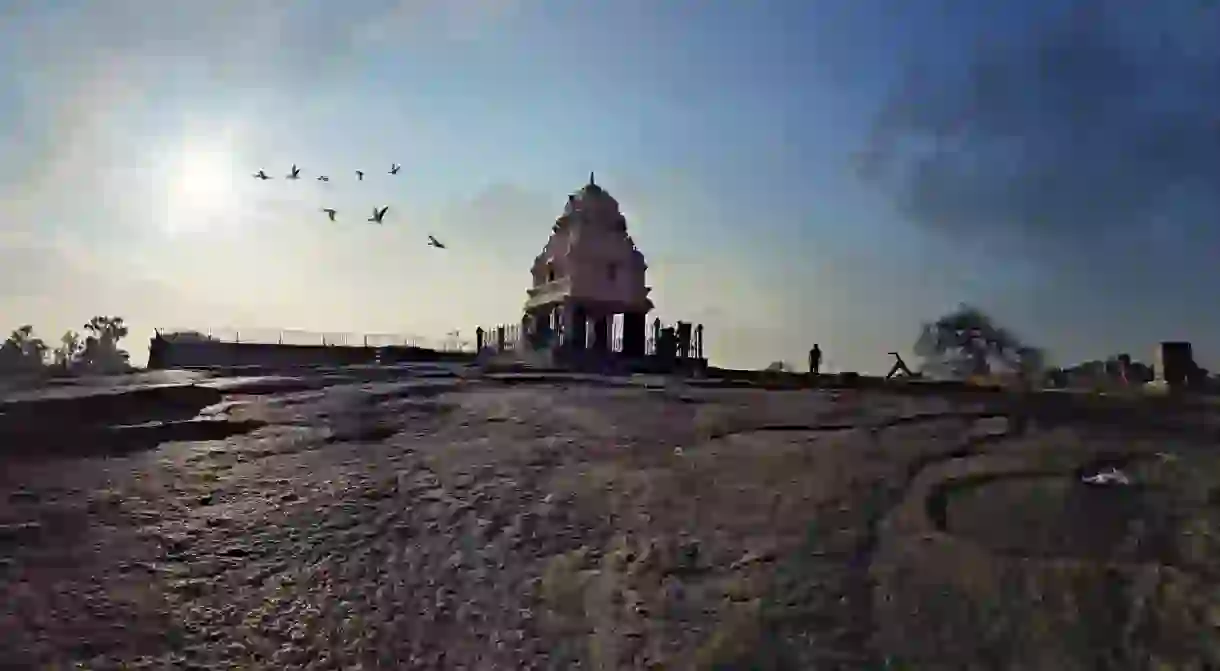A Tour of Bangalore's Architectural Landmarks

Bangalore’s architectural landmarks bear witness to the grandeur of the royal dynasties that have ruled the ‘Garden City’. Take our tour of the finest buildings in the city: every stone has a story to tell.
Vidhana Soudha
A brainchild of one Kengal Hanumanthaiah, Vidhana Soudha is arguably the epitome of palatial secretariats in India. Built in 1956, Vidhana Soudha boasts a marvelous blend of Neo-Dravidian and Indo-Saracenic architectural styles. After drawing eclectic inspiration from his travels across several continents, Hanumanthaiah gave Bangalore its symbol of identity in the form of this magnificent structure. The largest legislative building in India, Vidhan Soudha houses the state legislature of Karnataka. The landmark building is in the heart of the city, making it all the more impressive; visit in the evening, when it is illuminated.

Attara Kacheri/Karnataka High Court
Attara Kacheri—meaning eighteen offices—is a red brick building that is home to the Karnataka High Court. Facing the Vidhana Soudha and with Cubbon Park as its backdrop, Attara Kacheri reflects the Greco-Roman style of architecture characterized by ornate Corinthian columns that mimic classical European architecture. Attara Kacheri was constructed in 1868, at the zenith of British colonialism in India. Much of its prominence is attributed to Lewin Bentham Bowring, erstwhile Commissioner of Mysore.

Tipu Sultan’s Summer Palace
Tipu Sultan (1750-1799) went down in history as a hero, and is known as the Tiger of Mysore. He also had a penchant for grand architecture, reflected in his summer palace, ‘Rash-e-Jannat’ or ‘Envy of the Heavens’. Predominantly constructed using teak wood, Tipu Sultan’s Summer Palace is decorated with meticulous motifs, and is a visual treat. Indo-Islamic architecture finds its true archetype here.

Bangalore Palace
Elaborate towers, embellished doorways, floral motifs and lacquer-ware makes Bangalore Palace a sight to behold. When Chamarajendra Wadiyar X’s British guardians bought land from educationist Rev. J. Garrett, they were looking to build an unassuming accommodation for the young Maharaja. Four years later, in 1878, a Tudor style palace emerged, which still has the ability to leave visitors wonderstruck. Bangalore Palace’s Victorian furniture and Gothic-styled stained glass windows are in excellent condition.

Seshadri Iyer Memorial Hall
Amid the lush greenery of Cubbon Park lies the Seshadri Iyer Memorial Hall, built in commemoration of Sir Kumarapuram Seshadri Iyer, the Diwan of Mysore from 1883 to 1901. The European-style building, characterized by its Tuscan columns, was built in 1915. It was commissioned by Lord Curzon, the then Viceroy of India. Seshadri Iyer Memorial Hall houses the State Central Library, with a vast collection of books.

Devanahalli Fort
Situated 22 miles (35 km) from Bangalore, Devanahalli Fort was built in 1501 by Mallabairegowda, a contemporary of Kempegowda, the founder of Bangalore. The fort was breached several times throughout its tumultuous history. From the Mysore rulers to the East Indian Company, Devanahalli Fort has been a home to many. Spread over a large area, a primary feature of the fort is the semi-circular bastions connecting the sturdy walls. The temples within the premises reflect Dravidian and Vijayanagara architectural styles.
Devanahalli Fort, Devanahalli, Bangalore Rural, +919972741108

Gavi Gangadhareshwara Temple
Gavipuram Cave Temple, or Gavi Gangadhareshwara Temple, is a mystifying (yet explicable) rock-cut architectural marvel. Built in a natural cave in the 1500s, the Lord Shiva temple houses a monolithic-cut idol of the deity. Every year on the day of Makara Sankranti, the evening sunlight spreads over the intricate monolithic sculptures and illuminates the Shiva linga inside. Devotees flock here to catch a glimpse of the miracle.














